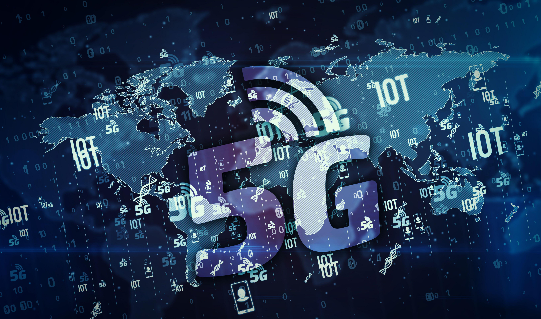What is the value of 5G at the edge?


Recently, many have questioned the value of 5G at the edge. Can't we just use Wi-Fi? We can build a Long Range Wide Area Network (LoRaWAN) network for our IoT devices and technology. Is 5G ready to make a difference? I don't see a difference on my smartphone. These are very good questions and concerns. So why is 5G important at the edge?
Why is 5G important at the edge?
In fact, 5G is not only an evolving technology in its early stages; its global deployment is even earlier. Some markets don't have a lot of 5G equipment, and those that do have 5G equipment that's barely moving away from the old LTE core network. We still have a long way to go.
And expect some of the new features of 5G to appear at the edge, which will make it very different from alternative forms of wireless and wireline access for distributed edge applications. Take a look at some of them below.
●Critical connections
5G, especially Release 16 and beyond, will bring some powerful capabilities to make ultra-reliable, low-latency mobile wireless communications a reality. This is a big deal. It won't be ubiquitous, and deployments will be well-planned and highly engineered. However, there are and will be scenarios in the future that make critical mobile communications critical and of high value.
● Deterministic wireless communication
5G in advanced versions really starts to build deterministic network capabilities. This means that real-time applications that require a high degree of synchronization will be possible through private 5G or certain areas of the operator's network.
Why is this important? Until the recent release of 5G, mobile networks have been the best effort. With the standalone 5G network with a 5G core, a new deterministic network service will begin to hit the market.
● Massive bandwidth
Generally speaking, 5G brings massive bandwidth, which means huge capacity and throughput. This means faster downloads and, therefore, increased uplink capacity. This is due to 5G making available new spectrum in the mmWave spectrum, as well as more efficient use of legacy spectrum from 4G, 3G and 2G, which will eventually be redeveloped.
● Massive IoT device support
5G networks will be able to support a large number of devices per square kilometer and bring new types of connected smart devices, thanks to a new capability called 5GNR-LightforreductionCapability or RedCap. NB-IoT (Narrowband Internet of Things) is starting to gain traction, especially in China, enabling operators to provide economical connectivity for low-power IoT devices deployed in unconstrained and constrained environments and scenarios.
● Avoid the Wild West
The internet is insane, best-effort at best. Carrier networks are highly secure and reliable. As more operators embrace and deploy standalone (SA) 5G networks that no longer rely on the LTE core, more dedicated and deterministic services will come to market as end-to-end network slicing becomes a reality. Many of the deterministic features of 5G can be implemented natively in various private network architectures for time-sensitive applications.
These aspects differentiate cellular networks from the Internet and other access network technologies such as Wi-Fi and LoRa. Devices on a carrier's network, whether it's a telecom or private network, use a SIM card to authenticate on the network. High-profile private 5G networks leverage the same technology, which could bring carrier-grade capabilities.
Private LTE networks also provide this differentiation, which is why it has been in the market for years. Many of the benefits of cellular networks come from the core network, which makes the LTE or 5G network a managed network rather than an open network, the Internet.
What impact will 5G have at the edge?
In the 5G era, what do the advantages and differences of cellular network technologies mean for edge services?
● New mobile computing possibilities
Wi-Fi is cool, but not suitable for mobile computing applications. And LoRaWAN. These networks will enable new mobile computing models and use cases beyond smartphones. This means that IoT brings more types of connected and smart devices. This is important because it opens up a whole new way to look at edge computing in the 5G era and beyond.
● will make the Internet of Things happen
The networking aspect of IoT, especially at scale, has been a challenge to date. Historically, coverage has been one of the key limiting factors. With new capabilities such as NB-IoT evolving through 5G and 4G capabilities, 5G is expected to change that, offering operators new possibilities for affordable 5G IoT services that leverage existing network and spectrum assets.
● More devices means higher IoT sensory density
5G's support for massive IoT will allow enterprises to expand and deepen visibility at the edge of their business. It will also provide operational insights with a higher level of fidelity due to the higher capacity access network, which enables more data to be sourced from more devices at the enterprise edge. It all comes down to sensory density.
● More true real-time edge applications
Honestly, the most real-time environment in an enterprise is not the headquarters. Field, shop floor, and retail locations are the keys to true real-time applications. 5G will enable a wider range of edge applications that can take advantage of the real-time, reliable capabilities available in their nearby private or carrier networks.
write at the end
5G, means the possibility of mobile innovation across the edge, especially for critical applications and large-scale IoT scenarios. As 3GPP evolves this generation of mobile wireless technology, these are indeed the best options for 5G now and in the future.
The best thing about 5G is that it is global. This is important for the Internet of Things, especially the massive Internet of Things. The promise is possible if 5G and its practical impact on reshaping business and customer experience for at least the next few decades can be understood.